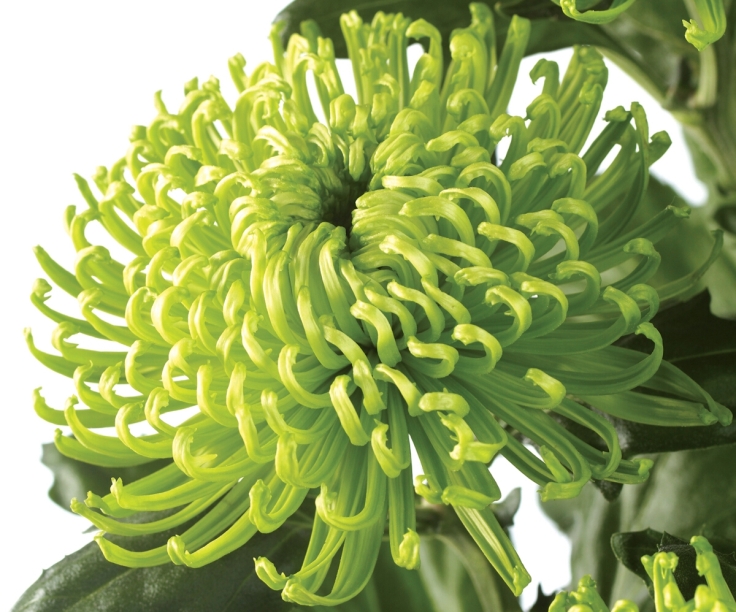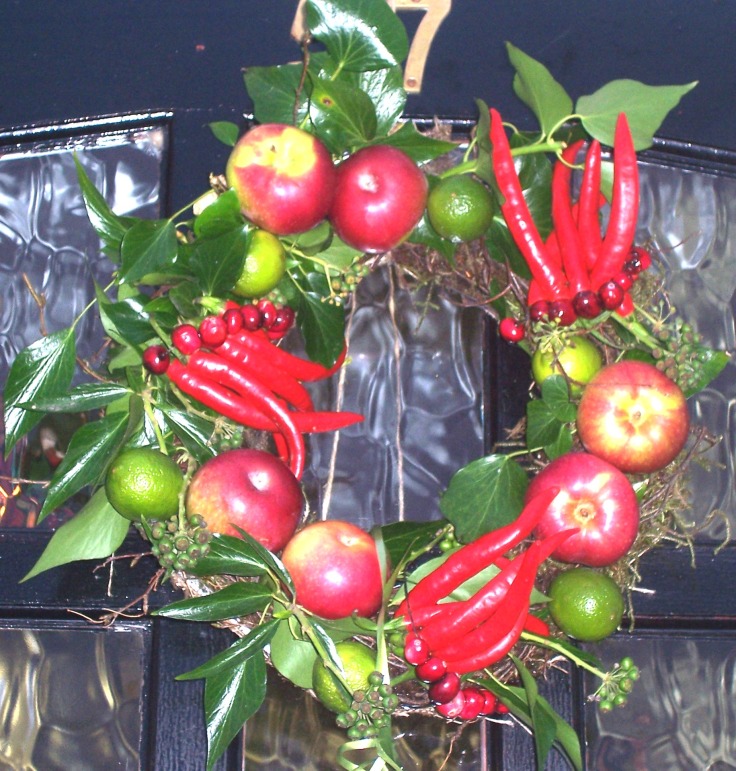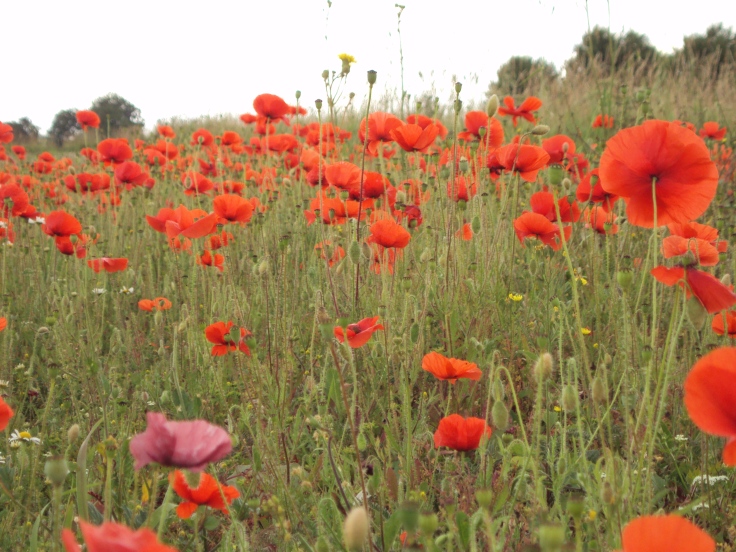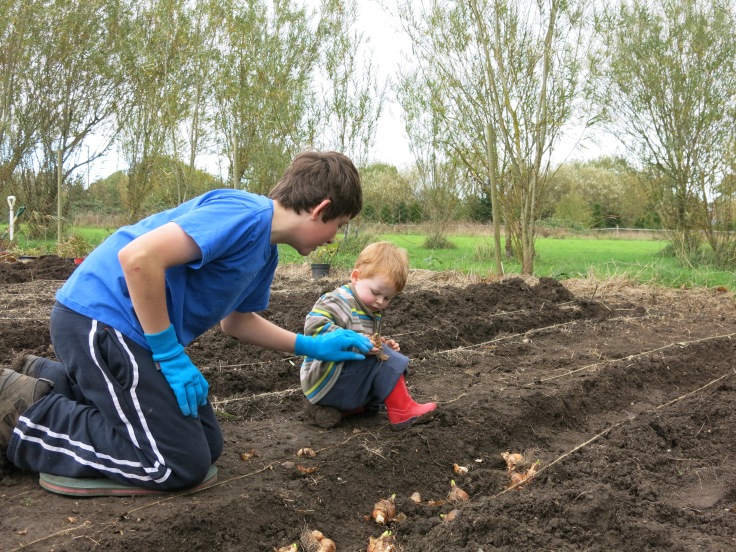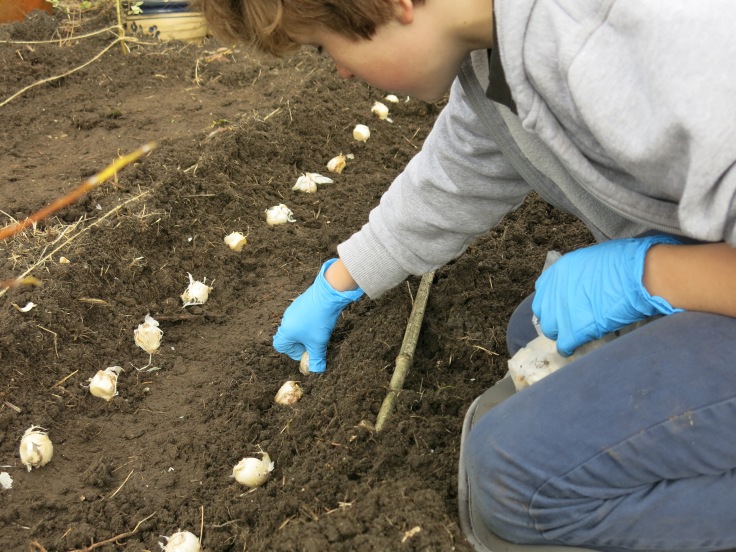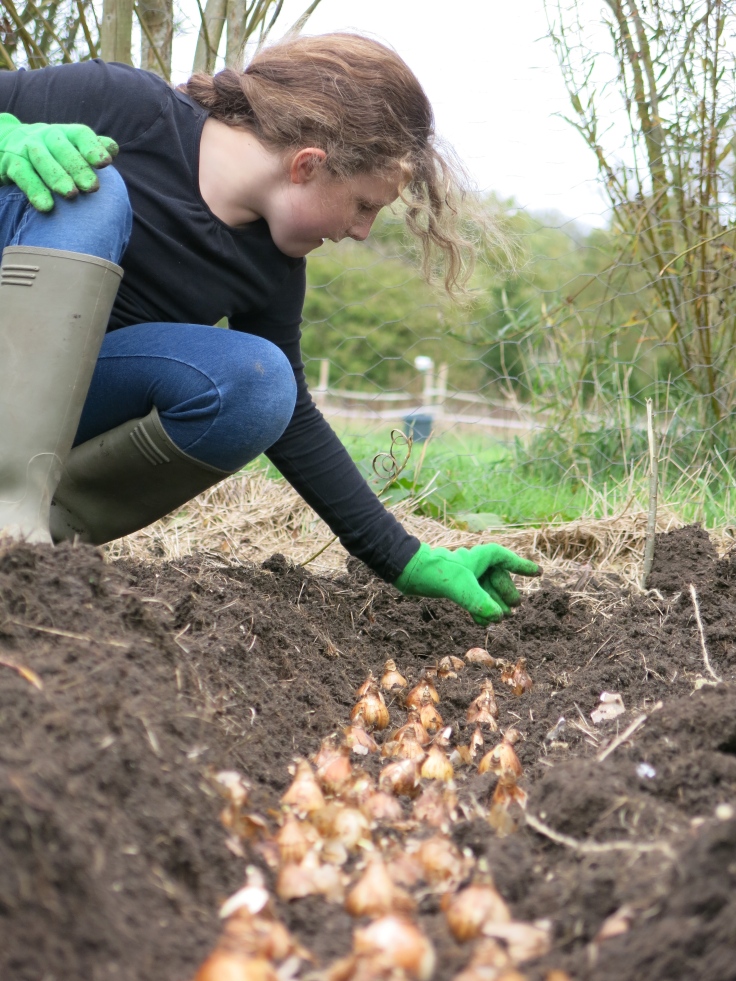pics from Woolmans
The flowery folk of Twitter have been getting into a lather this week about chysanthemums. If you have relegated them to the compost heap as being cheap garage forecourt flowers in nasty shades of yellow and pink, you are not alone. Worse still, my limited market research (carried out next to a bucket of sad looking specimens near the door in Budgens) revealed that they conjure up an image of dead graveyard flowers. Chysanthemums are so ‘last year’. #britishflowers this week aimed to explore the subject, dispel the myths and rebrand ‘mums ready for next year when they will burst onto the British flower growing scene.
If you want to see chysanthemums in a new light check out Floret Flower Farm. To flower growers and florists on Twitter, Erin seems to be floral royalty and plenty of tweeps got over excited when a visit was mooted. (I just like looking at the pics.) Even more exciting for me was the challenge of finding a variety acceptible to my Welsh chum Rachel, a self-confessed chrysanthemum hater. I found a chink in her armour when she said the green ones were okay. I like Anastasia Green (pictured above) but I’m going to have to grow ‘Froggy’. We have a tradition of planting things which remind us of milestones in the lives of our children. When they were little Mr Countrygate and I spent hours reading ‘Froggy gets Dressed’ to all three of them. They were obsessively attached to it and we quite like the silly voices we developed to make it a highly entertaining read for all concerned. So ‘Froggy’ gets a place in our garden next year and in the school flower patch.
remind us of milestones in the lives of our children. When they were little Mr Countrygate and I spent hours reading ‘Froggy gets Dressed’ to all three of them. They were obsessively attached to it and we quite like the silly voices we developed to make it a highly entertaining read for all concerned. So ‘Froggy’ gets a place in our garden next year and in the school flower patch.
Here’s the write up from Sara Davison. Go on, grow some ‘mums next year or at least buy some from those of us who do.
This week’s subject, the chrysanthemum and why they no longer appear to be a flower of choice, was inspired by a blog post by Erin Benzakein of Floret Flower Farm (@FloretFlwrFarm). Once the link appeared on Twitter and was read and re-tweeted a few times by #britishflowers growers my co-conspirator Sara W(@myflowerpatch) and I decided it would make a great discussion topic. But uncertain that we’d fill a whole hour with chrysanthemum chat we opted to split the topic and cover two subjects in the session. How wrong we were – but in a very very good way!
We opened the chat and earlier in the day B J Richards Flowers (@UkFreshFlowers) had Tweeted that they were destroying their plants because they were unable to sell the flowers, that had me worried then, thinking we’d chosen a subject that would not get the chat going. However then Erin joined us which for #britishflower growers, in fact flower growers anywhere, was a bit like Royalty stopping by for a cup of tea! It was fantastic and the hour buzzed by even faster than usual, and we filled 60 minutes+ with chrysanthemum focused chat, and a side order of potential travel plans!
So before I start on the notes proper, a huge thanks again to Erin for taking the time to join #britishflowers hour (I haven’t worked out what time of day it was for her, but I hope it was not too anti-social), and well done Sara for inviting her in the first place.
Chrysanthemums – warnings against…
Cheap imports from Holland and supermarkets have taken their toll on #britishflowers. Too often chrysanthemums form a staple part of the petrol station forecourt ‘bunch’ or are sold in single colour sprays wrapped in cellophane; no imagination used at the supermarket. Horror of horrors, people have seen them dyed outlandish colours; blue flowers anyone?
Chrysanthemums – reasons to try…
The brilliant range of colours that are so perfect for autumn and winter days.
The way that with care and attention you can cultivate single specimen blooms of a size and form to knock a florist’s socks off – if you think how dahlias give oompf to a later summer bouquet, chrysanths do the same this time of year.
They last for ages as a cut flower, which is critical now that the central heating is going on.
Chrysanthemums – things you should know/consider if planning to grow next season…
They require work – bought as young cuttings from specialist growers in early Spring they need potting up and bringing on in a greenhouse/polytunnel/porch or other sheltered and frost free spot.
They can be planted out in larger pots in the Summer – but take care against slug and snail attack. They are also susceptible to damp, aphids, caterpillars, white rust…
You need to pinch them out, disbud and generally take loads of care to cultivate single blooms if you want specimen flowers. I have no experience to share but if you read the guides available from the growers’ websites (Chrysanthemums Direct, Woolmans etc) you should find all you need there.
After growing outdoors all summer and making majestic plants they need bringing under cover again for the winter – and this is where a poly tunnel/greenhouse becomes more essential. It’s one thing protecting little cuttings in the spare bedroom at the beginning of the growing season, but another matter trying to find house room for 4’ (and taller) specimens once the days start turning chilly. So do think carefully about this aspect.
An important tip – don’t try keeping a plant going beyond one flowering season; this is too much of a disease risk. (Although I’m sure you would be able to use it to propagate from…but look and see what advice the growers give on their websites).
Chrysanthemums – once you’ve grown your blooms…
Using them in arrangements and bouquets – for the best inspiration and ideas look on Instagram at photos posted by Erin, Claire (PlantPassion) Georgie and Garden Gate Flowers to name but a few.
Selling them to florists – several well chosen blooms of contrasting/clashing colours and mixed flower forms should have them biting your arm off to get at them! Claire (PlantPassion) told the story of a florist who’d initially said ‘no chrysanths’ but now snaps them up – very satisfying.
Perhaps therefore, we need to see a ‘less is more’ approach? If the large scale wholesalers are cutting back on chrysanthemum production to concentrate on something else that generates a better return might that not leave a little window open for us ‘indie’ growers who can experiment with a wider selection of the more unusual varieties?
UK Suppliers:
Chrysanthemums Direct
Woolmans
Sarah Raven
Halls of Heddon
Trainview Farm
And the travel bit? Well we’re either planning a mass exodus of #britishflowers growers to visit Erin in the US or she is planning a #britishflowers roadtrip to see as many of us as she can fit in – either way there are some exciting times ahead!
I do hope I’ve not missed anyone or anything – join us on Twitter next Monday 8-9pm for the full experience.
Sara
The Handpicked Flower Company
(@HandpickedFlwrs, @inoutofmygarden)

